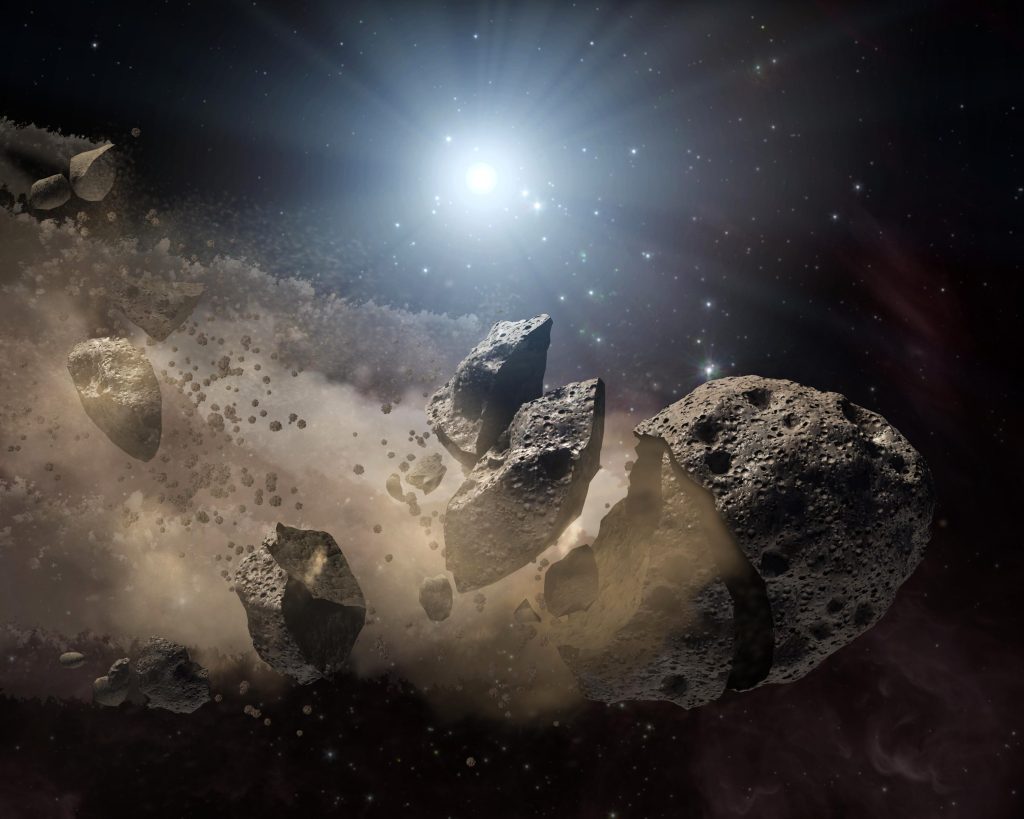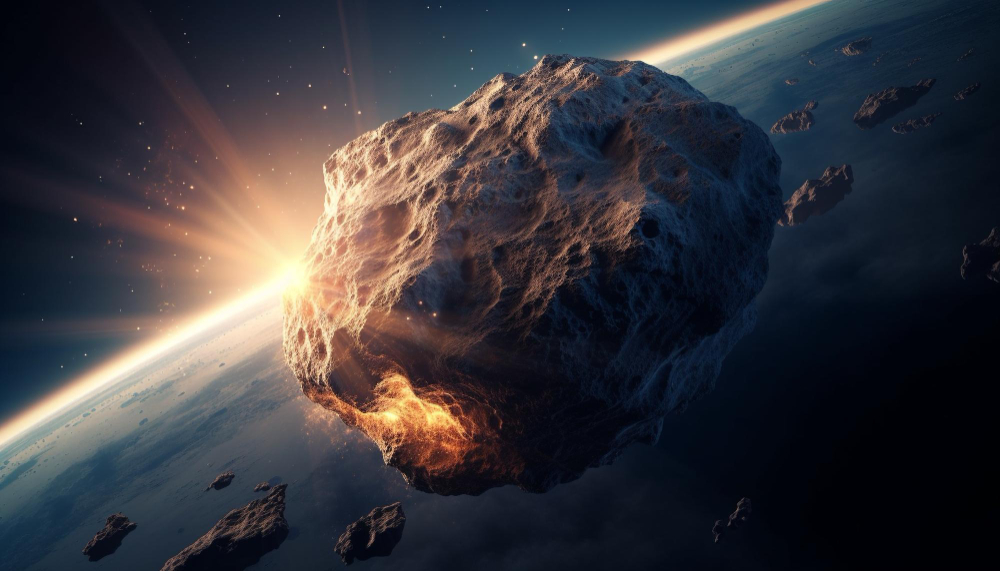What are Near-Earth Asteroids (NEAs)
Near-Earth asteroids (NEAs) are small, rocky bodies that orbit the Sun and can come close to Earth’s orbit. There are over 30,000 known NEAs, and new ones are being discovered all the time.
NEAs are classified into different groups based on their orbits. The two most important groups are:
- Aten asteroids: These asteroids have orbits that cross Earth’s orbit.
- Apollo asteroids: These asteroids have orbits that are close to Earth’s orbit, but do not cross it.

The Threat of Asteroid Impacts
Asteroid impacts are a rare event, but they can have devastating consequences. An asteroid impact large enough could cause widespread destruction and loss of life.
The size and speed of an asteroid determine the severity of its impact. An asteroid just a few meters in diameter could explode in the atmosphere with the force of a nuclear bomb. A larger asteroid could impact the Earth’s surface and cause a crater that is miles wide.
NASA’s Efforts to Protect Us from Asteroid Impacts
NASA is working to protect us from asteroid impacts in a number of ways. One way is to track NEAs and identify any that pose a potential threat to Earth. NASA also has a program to develop technologies to deflect or destroy asteroids that are on a collision course with Earth.
One of NASA’s most ambitious asteroid missions is the NASA OSIRIS-REx mission. OSIRIS-REx is a spacecraft that landed on the asteroid Bennu in 2018 and collected samples of its surface material. The spacecraft is scheduled to return to Earth in 2023 with the samples, which will be studied by scientists to learn more about asteroids and how to protect us from them.
Another important NASA asteroid mission is the Double Asteroid Redirection Test (DART) mission. DART is a spacecraft that will be launched in 2021 and will impact the asteroid Dimorphos in 2022. The goal of the DART mission is to test the feasibility of deflecting asteroids by impacting them with spacecraft.
5 Near-Earth Asteroids That NASA Is Tracking
Near-Earth asteroids (NEAs) are small, rocky bodies that orbit the Sun and can come close to Earth’s orbit. There are over 30,000 known NEAs, and new ones are being discovered all the time.
While the vast majority of NEAs pose no threat to Earth, there are a few that NASA is tracking closely. These NEAs are large enough and have orbits that bring them close enough to Earth that they could potentially impact our planet.
Here are five NEAs that NASA is tracking:
Apophis asteroid:
The Apophis asteroid is a potentially hazardous asteroid (PHA) that is about 370 meters in diameter. Apophis has an orbit that crosses Earth’s orbit, and it is one of the few PHAs that poses a significant risk of impact.
In 2013, astronomers predicted that Apophis had a 2.7% chance of impacting Earth in 2029. However, subsequent observations have shown that Apophis will miss Earth in 2029 by about 19.5 million kilometers.
Despite the fact that Apophis will miss Earth in 2029, it remains a PHA. Apophis will make a close approach to Earth in 2029 that will change its orbit slightly. This change in orbit could make Apophis a threat to Earth in the future.
Bennu asteroid:
Bennu is a 500-meter-diameter asteroid that was discovered in 1999. It has an orbit that brings it close to Earth every few decades. In 2018, NASA launched the OSIRIS-REx spacecraft to Bennu. NASA OSIRIS-REx landed on Bennu in 2020 and collected samples of its surface material. The spacecraft returned to Earth in 2023 with the samples, which are now being studied by scientists.
Didymos asteroid:
Didymos is a 780-meter-diameter asteroid that was discovered in 1996. It has a small moon, Dimorphos, which is about 160 meters in diameter. In 2021, NASA launched the Double Asteroid Redirection Test (DART) spacecraft to Didymos. DART is scheduled to impact Dimorphos in 2022 in a test of asteroid deflection technologies.
Ryugu asteroid:
Ryugu is a 900-meter-diameter asteroid that was discovered in 1999. It has an orbit that brings it close to Earth every few decades. In 2018, Japan launched the Hayabusa2 spacecraft to Ryugu. Hayabusa2 landed on Ryugu in 2019 and collected samples of its surface material. The spacecraft returned to Earth in 2020 with the samples, which are now being studied by scientists.
2023 QF6:
2023 QF6 is a 68-meter-diameter asteroid that was discovered in 2023. It has an orbit that brings it close to Earth every few years. 2023 QF6 is scheduled to make a close approach to Earth on October 8, 2023, at a distance of about 1.6 million miles.
NASA is tracking these NEAs and other NEAs that pose a potential threat to Earth as part of its Planetary Defense program. The Planetary Defense program is working to develop technologies to detect and deflect NEAs that are on a collision course with Earth.
While the risk of an asteroid impact is very low, it is important to be prepared. NASA and other organizations are working to protect us from asteroid impacts, but more needs to be done. We can all play a role in protecting ourselves from asteroid impacts by staying informed and making a plan.
What Can We Do to Protect Ourselves from Asteroid Impacts?

The best way to protect ourselves from asteroid impacts is to identify NEAs early and develop technologies to deflect or destroy them if necessary. NASA is working on a number of programs to do this, but more needs to be done.
Governments and international organizations also need to work together to develop a plan to respond to an asteroid impact. This plan should include procedures for evacuating people from areas that are at risk of impact and for providing relief to those who are affected by an impact.
What Can I Do to Protect Myself from an Asteroid Impact?
The best way to protect yourself from an asteroid impact is to be prepared. Here are some things you can do:
- Stay informed about asteroid threats. Monitor news reports and NASA’s website for information about NEAs and any potential threats to Earth.
- Make a plan for what to do if an asteroid impact is imminent. This plan should include where you will go and what you will do to stay safe.
- Have an emergency preparedness kit. Your kit should include food, water, first aid supplies, and other essential items.
Frequently Asked Questions (FAQs)
Q: What is the probability of an asteroid hitting Earth?
The probability of an asteroid hitting Earth is very low, but it is not zero. There are over 30,000 known NEAs, and new ones are being discovered all the time. Some of these NEAs could pose a threat to Earth in the future.
Q: What are NASA’s plans to deflect or destroy asteroids?
NASA is developing a number of technologies to deflect or destroy asteroids. One technology is to impact asteroids with spacecraft. This would change the asteroid’s orbit and prevent it from impacting Earth.
Another technology is to use gravity tractors to deflect asteroids. A gravity tractor is a spacecraft that would fly close to an asteroid and use its gravity to pull the asteroid off its course.
Conclusion
The threat of asteroid impacts is a real one, but it is also important to remember that the probability of an impact is very low. NASA and other organizations are working to protect us from asteroid impacts, but more needs to be done.
We can all play a role in protecting ourselves from asteroid impacts by staying informed, making a plan, and having an emergency preparedness kit.
